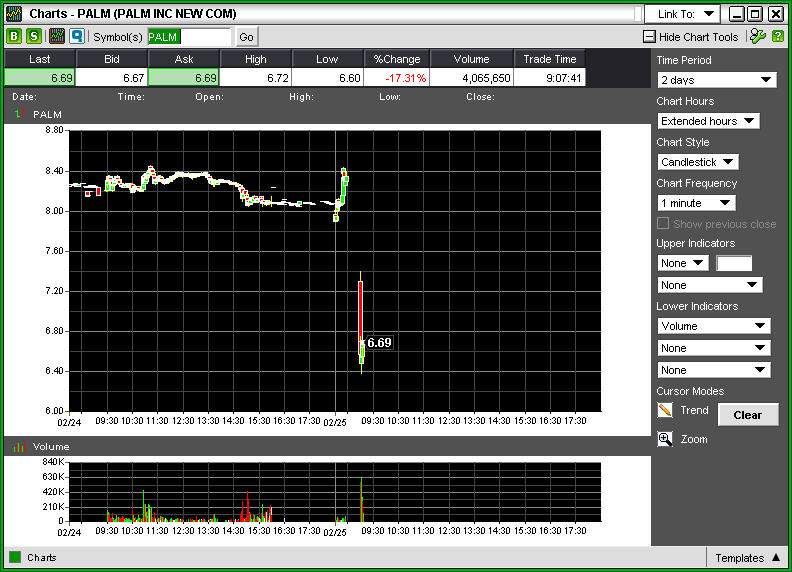Palm's wipeout: Revenue will be 'well below' forecasts as consumers balk

Updated: Palm's smartphone recovery took a big hit Thursday as the company sharply cut its outlook for the third quarter and fiscal 2010 because "driving broad consumer adoption of Palm products is taking longer than we anticipated."
How ugly is it? Palm said its third quarter revenue will be $285 million to $310 million under generally accepted accounting principles. Non-GAAP revenue will be $300 million to $320 million.
The problem: Wall Street is looking for revenue of $424.7 million.
For fiscal 2010, Palm also said its revenue will be "well below its previously forecasted range of $1.6 billion to $1.8 billion."
The issue is that Palm is being crowded out of the smartphone market by existing powerhouses---RIM and Apple---as well as resurgent players like Motorola. Meanwhile, the webOS is being swamped by Google's Android.
In a statement, Palm said "slower than expected consumer adoption of the company’s products has resulted in lower than expected order volumes from carriers and the deferral of orders to future periods."
Palm CEO Jon Rubinstein said:
Driving broad consumer adoption of Palm products is taking longer than we anticipated. Our carrier partners remain committed, and we are working closely with them to increase awareness and drive sales of our differentiated Palm products.
Get email alerts on Palm and smartphones.
Morgan Joseph analyst Ilya Grozovsky said in a research note that Palm's biggest problem was that it launched the Palm Pre Plus and Pixi Plus on Jan. 25 and had little runway to get penetration at Verizon Wireless. Palm needed a home run with Verizon and didn't get it.
Grozovsky wrote in a research note:
Palm launched the Palm Pre Plus and the Palm Pixi Plus on January 25 at Verizon, leaving only four months of sales before Palm's fiscal year end 2010, necessitating significant penetration at Verizon to meet management's fiscal 2010 revenue guidance, despite heavy competitive pressures from other smartphones such as the Droid and Blackberry. Our analysis assumed that Palm would need to achieve approximately 1% customer penetration at Verizon within the first 3 months in order to even come close to the low end of management's FY10 revenue guidance, and we felt that was overly optimistic. We now expect the competition to be even more challenging than we had originally anticipated for Palm in the smartphone market for 2010.
Grozovsky added that Palm is likely facing slower sales at Sprint too.
Needless to say Wall Street wasn't pleased. Here's the premarket look and shares were currently down 13 percent to about $7:
Add it up and Palm shares are trading back to April 2009 levels.
Simply put, Palm is going to have to spend more money on marketing if it wants to compete in the market share game. Scale matters and as this comScore chart shows, Palm's getting crunched by Android devices.
Related: Review: Verizon Palm Pre Plus can't win back this Palm fan yet
